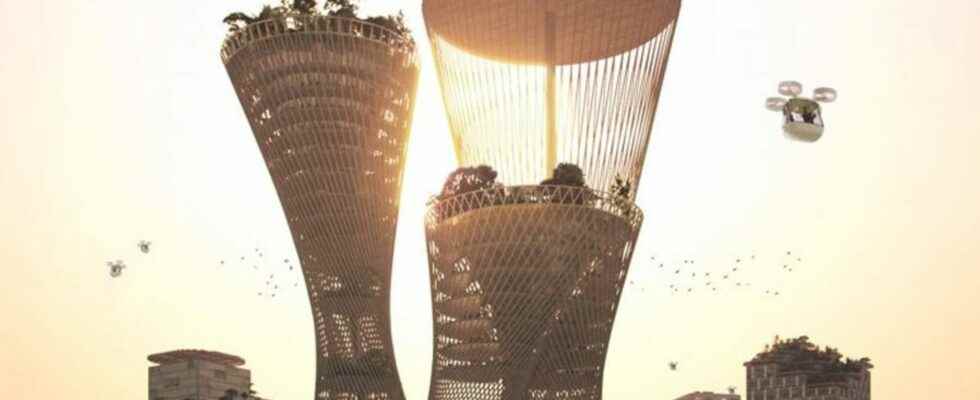Cities of superlatives
The futuristic concepts are so ambitious and expensive
Telosa is to be created in the USA. Where is still written in the stars.
© Telosa
The world population is growing, the earth is not. What to do with the human? There are ambitious plans for futuristic cities, but what good are they?
Over 7.7 billion people currently inhabit the earth – and the trend is rising. The question of where each individual should live has not only arisen since today? Futuristic urban planning projects want to be pioneering. It’s about space, quality of life, costs and, above all, sustainability. What do the “cities of the future” have to offer?
Telosa: A Utopia in the American Desert
USA, the land of unlimited opportunities, as the saying goes. If billionaire Marc Lore (51) has his way, this potential should be put into a mega-city. Telosa, whose name comes from Greek, means “highest goal”. By 2030, it should provide a home for 50,000 people in the middle of the desert. Exactly where the city will be located in the United States has not yet been decided: 36 counties from Nevada, Arizona and Utah could in any case become part of the project. Cost point: 400 billion euros.
Every resident should according to website be able to reach all the places in the city from the apartment within 15 minutes: groceries, sports and work places… For this, the focus will be mainly on pedestrians and cyclists. Cars should drive electrically and autonomously, it goes on to say.
Topics such as sustainability and renewable energies are also part of the plan. The first pictures of what Telosa could look like show modern high-rise buildings with trees even growing on their roofs. Floating passenger cabins, reminiscent of oversized drones, whiz through the city. Greenhouses and wind farms also characterize the cityscape. Telosa aims to be “open, fair and inclusive”.
The whole thing is to be borne by foundations that manage money from lease licenses in the country and invest in social services. Every inhabitant can directly influence political decisions. What that looks like in concrete terms is not known. Telosa is still in its infancy, if at all. Because despite good ideas and partial concepts, there is so far little concrete that Lore can present. Especially since it’s not even certain where Telosa should be built at all. It remains to be seen whether this utopia will really emerge or whether the whole thing will remain a utopia.
Neom: “city of the future” with length
A different concept is being pursued in Saudi Arabia. Neom is budgeted at $500 billion and is expected to be larger than Mecklenburg-Western Pomerania. The special thing about it is the 170 km long, 200 meters wide and almost 500 meters high building “The Line”. It will according to notification accommodate nine million people and get by without roads, cars and emissions. Those responsible, including the royal family, see it as an opportunity to think beyond the “oil state” era. Solar technology and wind power are used for this.
Similar to Telosa, an important point here is that residents can get from one end to the other within 20 minutes – by high-speed rail. It would not be Saudi Arabia’s first attempt of this kind. They had already tried to push through a mega-city project. At the time the project was presented, four other megacities, including King Abdullah Economic City (KAEC), were under construction. By 2030, two million people should actually be living in the Kind Abdullah City – so far there are less than 50,000…
